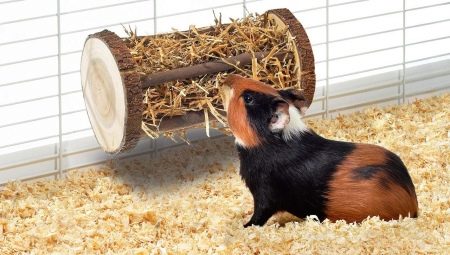Guinea pigs are quite unpretentious pets in caring. The owners of these cute rodents know that in the diet of the animal, in addition to granular feed, it is necessary to include hay. It would seem, what is the problem? Indeed, in the warm season on the lawns and lawns there is a lot of grass. But not every plant is suitable for drying and subsequent consumption by guinea pigs. The article will discuss how to choose and prepare hay, as well as make a sennik for guinea pigs with your own hands.
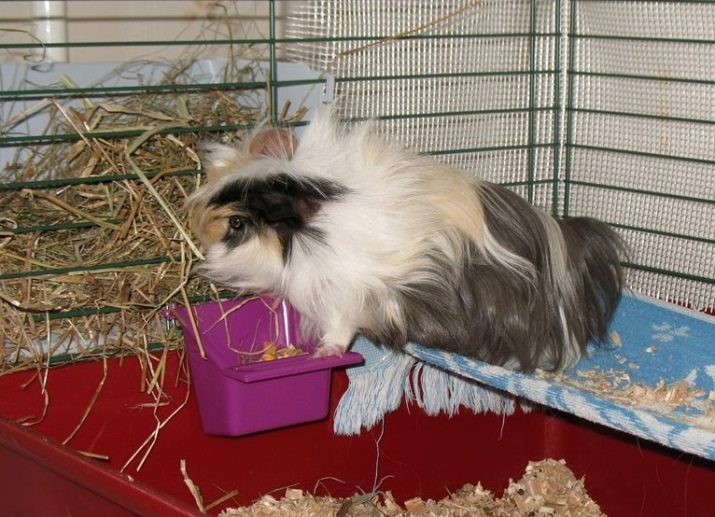
The benefits of hay
Guinea pigs are very important to receive dry grass daily. For animals, it is a source of plant fiber. In addition, the stiff pig stalks grind their teeth.
How many times a day, and how much to use dried grass, the pet decides for himself. It depends on his well-being and needs.
Therefore, a small amount of hay should always be in the cage.so that the pig, feeling the need, could come up and eat the amount of grass that she needed.
For these purposes, the house of guinea pigs must be equipped with a sennik.
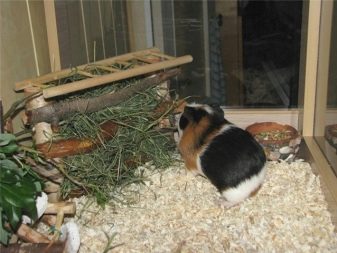
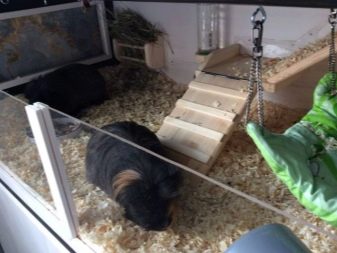
Picking grass
If the yard is winter and there is no way to find fresh plants, prepared dried hay for pets can be purchased at pet stores or ordered online. It contains plants that are safe for guinea pig, and it is fully prepared for use by animals.
Well, if the summer is in full swing, you can collect the grass yourself, while adhering to the following rules.
- The plants that you will be harvesting should be away from major cities, highways and roads.
- It is not worth collecting grass near industrial enterprises, as well as in areas where livestock graze.
- Only healthy-looking plants with a bright green color should be selected. Stems and leaves should not be affected by parasites or diseases.
- Grass that has already dried on the vine is not suitable for harvesting.
- It is advisable that the collection included alfalfa and timothy. These herbs are rich in beneficial trace elements and have a positive effect on the digestive system of rodents.
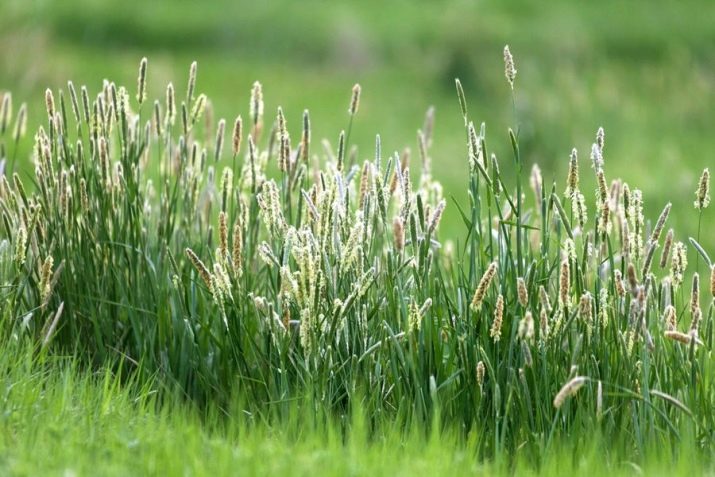
Plants that can harm guinea pigs:
- celandine;
- hemlock;
- elder;
- spurge;
- lily of the valley;
- nightshade;
- horse chestnut;
- horsetail;
- buttercup;
- henbane;
- hawthorn.
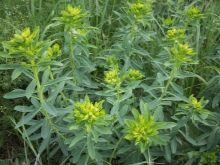
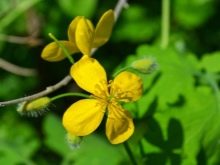

After harvesting, the grass must be spread out to dry in a dry room. Under it should lay a fabric or sheet of white Whatman paper. You can also cover the drying area with several sheets of plain white paper. It is not advisable to use newspapers for the backing. Ink from printing pages is very easy to peel off and may stick to blades of grass.. Harvested hay should not be exposed to direct sunlight.
Periodically, the grass should be ted up a bit and turned over so that the stems dry better and more evenly.
Drying lasts until all the stems are dull and brittle. After this, the hay needs to be transferred to a fabric bag. This will help to avoid the possible formation and growth of mold.

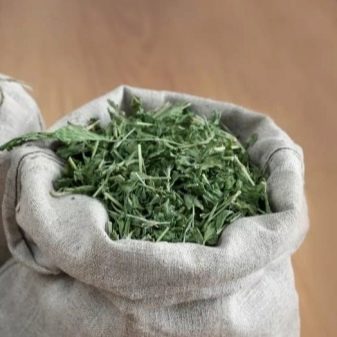
How to make a sennik?
You can build a hay holder yourself. Materials for its manufacture can be very diverse. If you dig on the mezzanine or in the pantry, you will surely find there something that you can make a feeder for your rodent from there. Next, several options for the Sennik for a cage or guinea pig house will be presented.
- Dry grass holder from a cardboard box. Any intact and undeformed cardboard packaging will do. The choice of size depends on the dimensions of the pet's house. Cut off the upper part and one of the sides, leaving 5–7 millimeters of the edge along the bottom edge. Make symmetrical holes on the sides of the box. Then it will be necessary to insert a flexible wire into them and fix the sennik on the wall of the house or pig's cage.
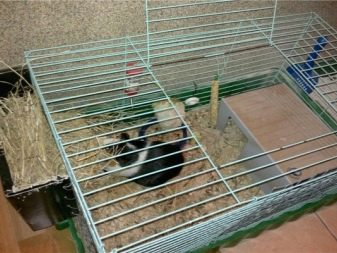
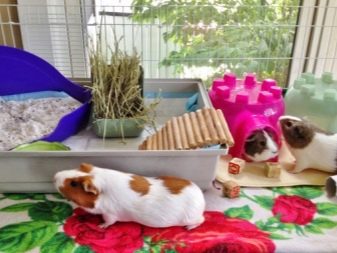
- The holder for dried grass can be made of plywood or boards. Take the necessary size parts and glue them in the form of a box with three sides. Such a sennik can be placed at the bottom of the cell, if the area allows. Or, as in the previous example, fix on the wall of the house.

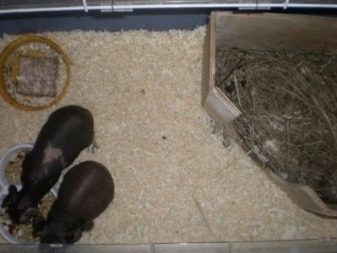
- Fabric sennik. Find two pieces of strong cotton fabric measuring approximately 20 x 20 cm. Fold them with the front side inwards. In the middle, draw and cut two circles of small diameter. These holes will subsequently serve as guinea pigs for feeding dry grass. Sew pieces of material on three sides, leaving the top edges free. You will get a small bag with two holes on the sides. Sew handles to it and suspend cages to the rods.
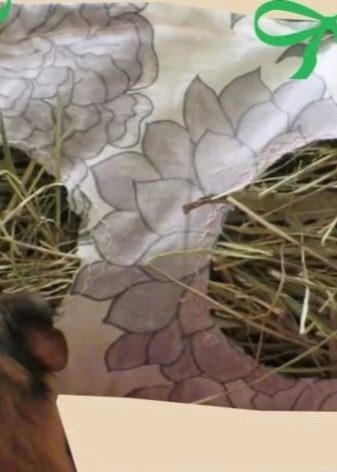
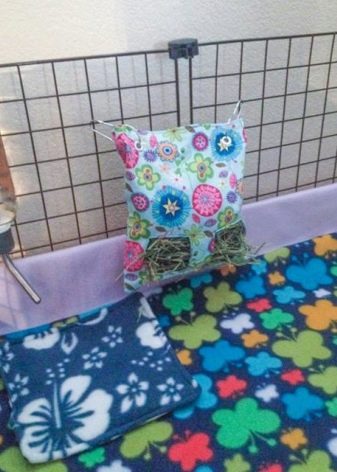
- The sennik can be made from a small plastic bottle. Cut off one of the edges at the point where the neck goes into a thickening. On the side of the bottle, cut a rectangular hole into which hay will be laid. Attach the finished sennik to the wall of the house with a flexible wire.
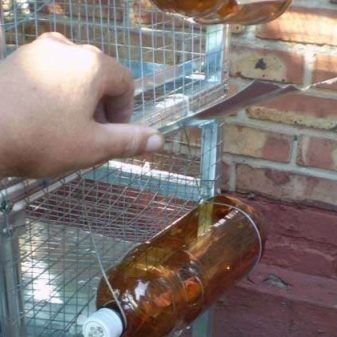

- A very simple version of a sennik constructed using a plastic kitchen container. Take a small container and remove the lid from it. Fill the container with hay and attach it with clothespins or stationery clips to the outside of the cage. The mechanism of operation of such a sennik is very simple. Blades of grass will lie in the container, and guinea pigs will be able to freely get the right amount of grass through the bars of the cage.
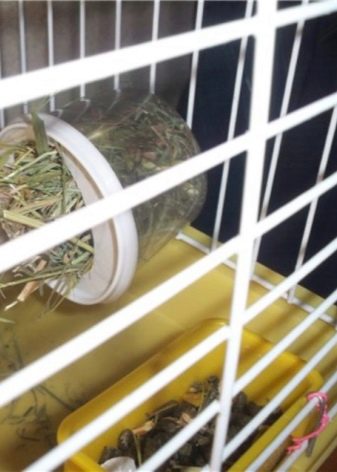
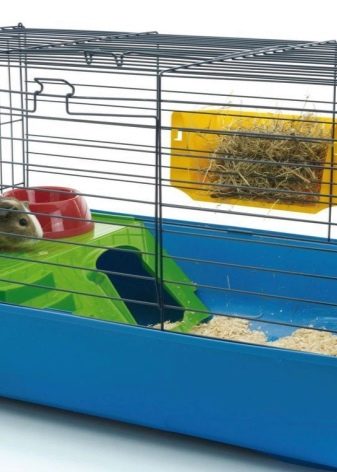
- The last version of the sennik is more likely a fun toy for a pet, but still performs the function of supplying dry grass. Take the old unwanted sock. Fill hay with it and sew. Leave the toy in the cage with your pet.Due to the smell of dried grass, guinea pigs will be carried away by the toe full of grass and begin to play with it. Pretty quickly they will be able to tear it and enjoy the hay inside.
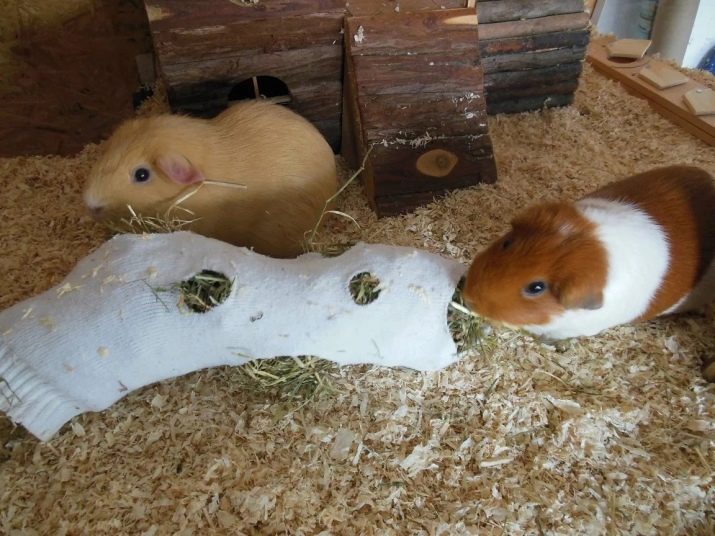
Regardless of which version of the production of sennik for guinea pigs you choose, most importantly, do not forget to regularly fill it with dried grass.
Also carefully monitor the quality of the hay you feed your pets. If signs of mold or rot appear on it, grass cannot be given to pigs, it should be thrown away.
On how to make a sennik for a guinea pig with your own hands, see the video below.
